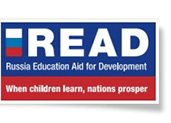A new UNESCO factsheet released for International Women’s Day shows where investments in girls’ education need to be stepped up.
The 10 countries with the highest out of school rates for girls are all in Africa apart from Afghanistan. In 8 of these 10 countries, over half of school-aged girls are out of school, rising to 75% in Afghanistan.The world achieved gender parity in the gross enrolment ratios in primary and lower secondary education in 2009 and in upper secondary education in 2013. However, in sub-Saharan Africa, there is no gender parity at any level of education. As of 2020, for every 100 boys, there were 96 girls enrolled in primary, 91 in lower secondary, and 87 in upper-secondary.
Even in upper secondary education where, on average globally, higher proportions of young women are now enrolling in comparison to young men, five countries have seen gender gaps at girls’ expense grow wider in upper secondary education since 2015. Again, apart from Afghanistan, the other four countries are also in Africa.
In sub-Saharan Africa, a major barrier for young women’s school trajectories is late enrolment and repetition. Young men can afford to be late completers but young women who are not on course to finish upper secondary school on time are under pressure to marry and have children. There has been no progress in addressing this challenge in the past 20 years. So, while 88 young women complete secondary school on time for every 100 young men, ultimately only 79 young women do so – a stark difference from such ratios of timely completion in other regions. This issue demonstrates the importance of giving girls a second chance to rejoin education in the region to close persistent gender gaps.
Within countries, investments need to be targeted specifically at girls in hard-to-reach areas or from poor families. The UNESCO World Inequality Database on Education (WIDE), jointly managed by the GEM Report and the UIS, visualizes how gender combined with other factors, such as location and wealth, can negatively affect education and life opportunities.
WIDE shows that, within countries, girls’ disadvantage is exacerbated due to location. In Mozambique, there are 73 young women in school for every 100 young men. While there is gender parity in urban areas, there are 53 young women in school for every 100 young men in rural areas.
Disparity is even more exacerbated in terms of wealth. In Côte d’Ivoire, there are 72 young women in school – but only 22 poor young women – for every 100 young men.
In 10 countries, 7 of the 10 poorest young women of upper secondary school age are out of school. In Guinea and Mali, practically no poor young women are in school, putting them in the same situation as their Afghan sisters who are officially banned from going to school.
Investment in girls’ education has seen huge advances over the past two decades. Entitled Her Education Our Future, the factsheet shows that countries have been recognising the importance of girls’ education, and that this is starting to see dividends. Today there are fewer girls out of school than boys (122 million to 128 million respectively). Today, 114 women are enrolled for every 100 men in higher education worldwide. Young women started completing upper secondary school at a higher rate than young men in 2017 too. Girls are advancing quickly in learning outcomes as well: globally, for every 100 proficient boys, there are 115 proficient girls in reading at the end of lower secondary education.
The increased commitment from countries to girls’ education has helped make the difference. In 1995, the Beijing Platform for Action urged countries to eliminate gender discrimination in education. Today, 105 countries prohibit it in their constitution. Since 1995, the number of States that have ratified the UNESCO Convention against Discrimination in Education (CADE) has also increased from 82 to 110.
The UNESCO HerAtlas has also mapped the number of states that have ratified the UN Convention on the Elimination of Discrimination Against Women (CEDAW), which provides for equal rights between men and women. Here too, countries are showing increasing commitment to gender equality with ratifications by States increasing from 150 to 189 States Parties, although 27 countries ratified it with objections to particular articles on child marriage or discrimination policy.
Download factsheet: unesdoc.unesco.org/ark:/48223/pf0000388934







